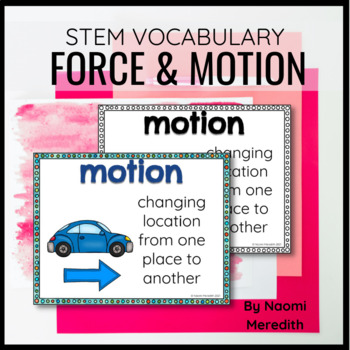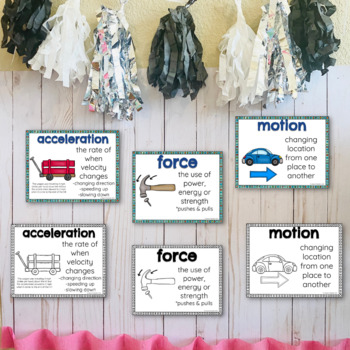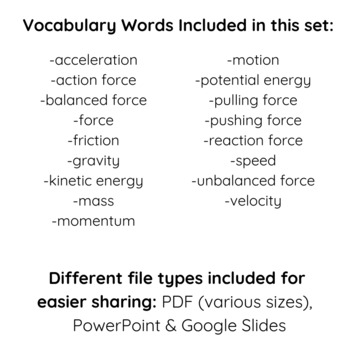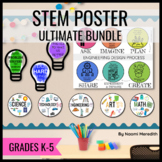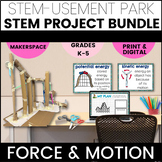Force & Motion Vocabulary Words | Digital & Printable
- Zip
- Google Apps™
- Microsoft OneDrive

Also included in
- STEM posters for the classroom that print-and-go to help students visualize routines and expectations when using technology & various tools in the classroom. In this ultimate bundle, you will have all of the go-to charts to help you get started when implementing STEM & Technology into your cPrice $42.00Original Price $52.50Save $10.50
- Walk into an amusement park and there are hundreds of examples of how force and motion is demonstrated throughout the place. By taking those same concepts, these hands-on and engaging lessons will see those attractions from a new perspective. By going through the Engineering Design Process, you’ll ePrice $34.40Original Price $43.00Save $8.60
Description
Force and motion vocabulary words to help students visually understand new science concepts and integrate into your unit. Print-and-go and digital resources to easily integrate in your lesson.
==========================================
You and your students will get to enjoy (Color and B&W versions):
- acceleration
- action force
- balanced force
- force
- friction
- gravity
- kinetic energy
- mass
- momentum
- motion
- potential energy
- pulling force
- pushing force
- reaction force
- speed
- unbalanced force
- velocity
==========================================
Perfect for:
- General Education Elementary Classrooms
- Science Classes
- STEM/STEAM Labs & Makerspace
- Technology Classes
- Library & Media centers
- After-School Clubs
- Extension Groups
- Summer Clubs
- Specialized Classes
- Substitute/Sub Plans
===========================================
How you will receive this product:
Various digital file types to meet your sharing needs
- PDF (non-editable, various sizes)
- Google Slides link
- PowerPoint file
How to assign digital versions to students:
- Google Slides pair perfectly with Google Classroom. Once you click the button, it will automatically make a copy for each student
- PowerPoint works well with Microsoft OneDrive users. Share with students within Microsoft Teams
===========================================
When you purchase a product from my store, a portion of the proceeds will be donated to classrooms in need of technology to enhance their students’ learning experience.
===========================================
Want to integrate the Engineering Design Process with these words? Combine itwith this cardboard wall maze lesson!
===========================================
Connect with me for more inspiration!
Naomi Meredith
Navigating STEM & tech in the K-5 classroom.
Click here to be updated when new products are posted.
Instagram: @naomimeredith_

